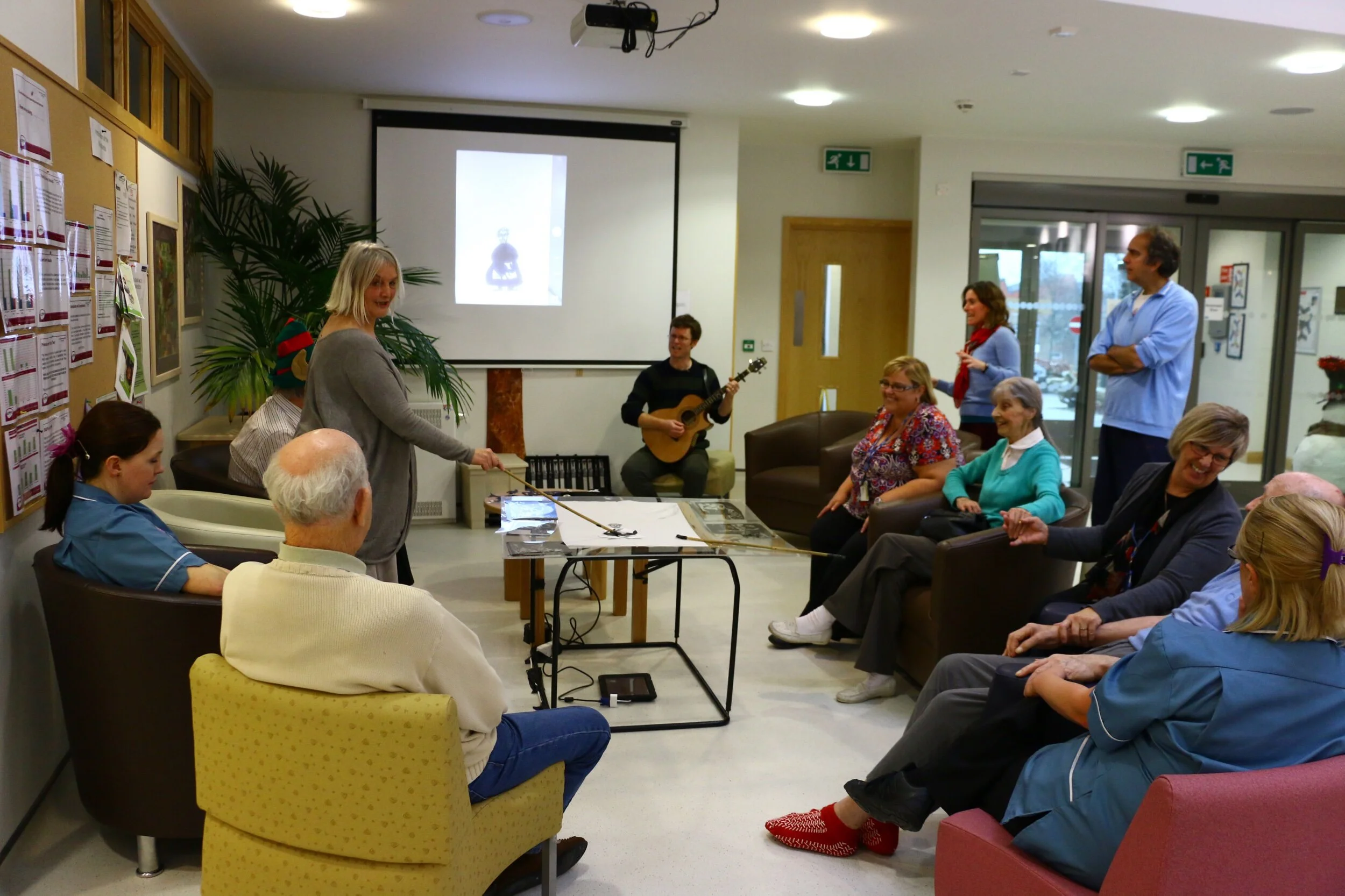In my experience, I have noticed different ways that groups of children with additional needs self-organise in a classroom. So that the children can have choice and control over how they participate, it is important to adapt our facilitation style to the needs of the group. The four categories of group are:
1. Tight group - works well if the children are happy to sit on chairs in a circle. If possible, don’t sit round a table so that children can move around the circle. This group is easier for a single staff member to facilitate.
2. Loose group - Chairs are set up in a circle but some children choose to move freely around room. Must be co- led with more than one staff member playing an instrument to support the session. Props can be used to tighten the group.
3. One at a time - more common with classes of children with complex needs who rarely engage as a group. Songs focus on one child at a time with opportunities for involving other children at appropriate times. Can be solo or co-led.
4. One-to-one - the music session is offered to a single child giving more time to be sensitive to the child’s needs. This style of facilitation results in kind of musical Intensive Interaction. Responding to the offers with music and interactive songs can make the interaction more interesting and appealing which, in turn, encourages engagement and further offers and can lead to enhanced rapport.
